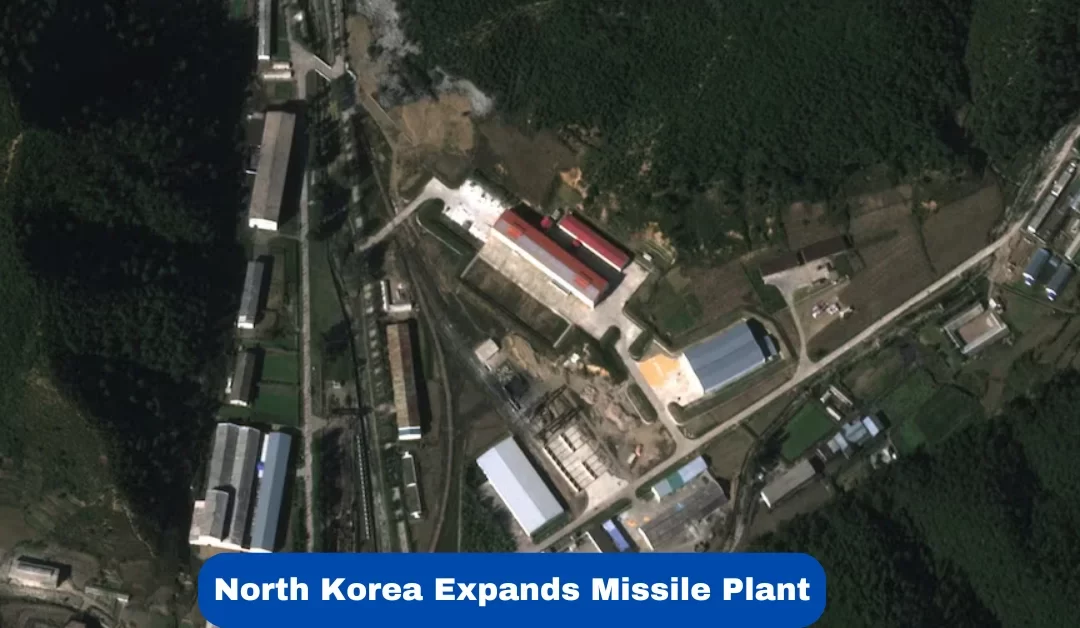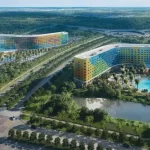North Korea is increasing the size of a major weapons factory, the February 11 Plant, located in Hamhung, its second-largest city. Researchers from the James Martin Center for Nonproliferation Studies (CNS) analyzed satellite images and concluded that this facility—responsible for producing short-range ballistic missiles—is undergoing significant expansion. These missiles, known as the KN-23 in the West, have reportedly been used by Russia in its war against Ukraine.
Key Features of the Expansion
New Construction at the February 11 Plant
- Satellite images from October 2023 show new assembly and housing buildings under construction.
- Enhancements include a new building approximately 60-70% the size of the original assembly building.
- Underground facilities are also being improved, with better access and the removal of obstructions like an old bridge crane.
Modernization Efforts
- North Korea’s state media, KCNA, confirmed ongoing modernization projects.
- These include rebuilding production facilities, upgrading equipment, and enhancing steel casting workshops.
- South Korean researchers at SI Analytics noted efforts to conceal activities from satellites, suggesting increased security and secrecy.
The KN-23 Missile: A Weapon in Focus
Design and Capabilities
The KN-23 missile was first tested in May 2019 and is designed to evade air defenses. It flies at a low altitude, following a “depressed trajectory,” making it harder to intercept. Analysts believe this makes the missile particularly useful for Russia, which is seeking ways to penetrate Ukraine’s air defenses.
Alleged Use by Russia in Ukraine
Ukrainian officials claim that Russian forces have used these missiles during their assault. While Moscow and Pyongyang deny any weapon transfers, the reports have raised concerns in Washington and Seoul.
Strategic Implications of the Expansion
Strengthening Military Ties
- North Korea and Russia have signed a mutual defense treaty and pledged to deepen military cooperation.
- The expansion of missile production facilities may signal North Korea’s intent to support Russia’s war efforts more actively.
Boosting North Korea’s Arsenal
Experts suggest that Pyongyang’s primary motivation might be to enhance its own missile stockpile. The February 11 Plant has produced a variety of military equipment, including tank wheels and rocket motor casings.
Regional and Global Concerns
- The alleged use of North Korean missiles by Russia undermines long-standing international efforts to curb Pyongyang’s ballistic missile program.
- The expansion of the February 8 Vinalon Complex, which produces missile fuel, further suggests North Korea’s commitment to advancing its missile technology.
Additional Findings from Satellite Images
- Researchers identified construction materials and vehicles at the site, indicating rapid progress.
- New buildings at the February 11 Plant could potentially serve as storage or additional assembly facilities.
- A nearby facility, the February 8 Vinalon Complex, is likely boosting production of solid propellants or UDMH, a critical liquid rocket fuel.
Role of North Korean Troops in Russia
Reports suggest that over 10,000 North Korean troops have been deployed to the Russian region of Kursk, near Ukraine. These troops are reportedly part of Russia’s airborne units and marines, participating in battles against Ukrainian forces. While Russia denies these allegations, the claims further highlight the growing ties between Moscow and Pyongyang.































